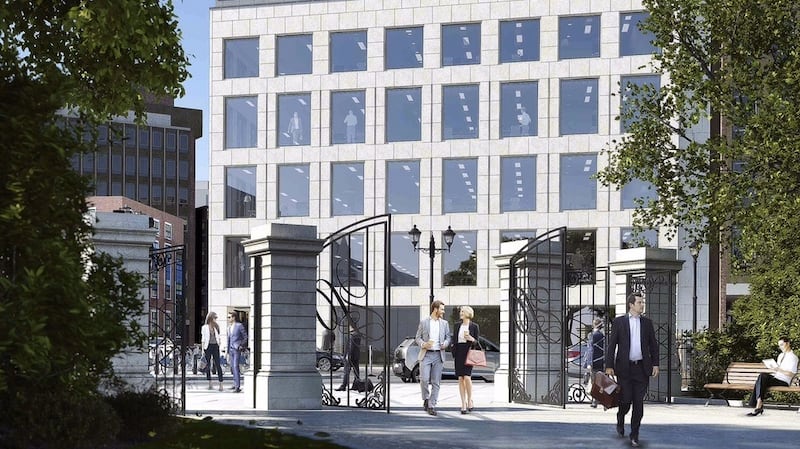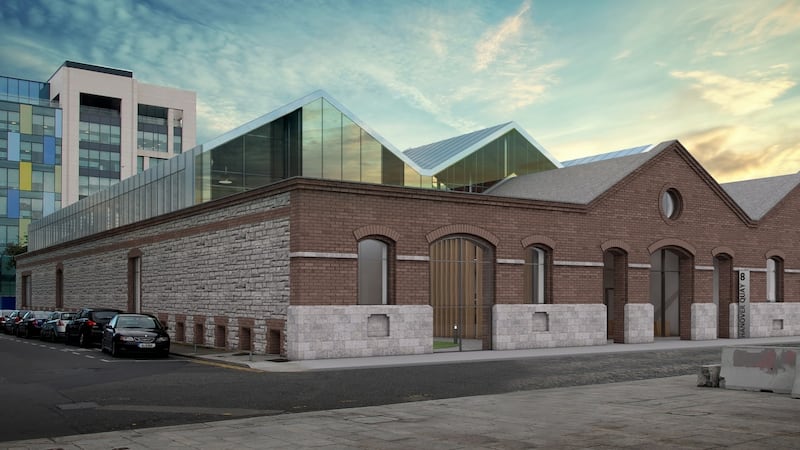The Dublin office market has experienced another robust year in terms of rental growth, take-up of space and investor activity but, even though the prospects for 2016 look solid on most fronts, there are serious pressure points facing the sector.
Principal among these is the chronic shortage of modern office space in the central business district. The overall vacancy rate in the city centre fell to 4.6 per cent at the end of the third quarter of 2015, says Deirdre Costello of agent JLL. That's down from 14.9 per cent in 2013 and 8.5 per cent in 2014.
However, the vacancy rate in some areas, particularly the D2 and D4 postal codes, has dropped to 1.4 per cent.


This sharp fall, combined with healthy demand for space, has pushed up rents to levels close to those experienced at the height of the Celtic Tiger era.
Costello says prime Dublin office rents have risen from €55 per sq ft in 2014 to €57 per sq ft now and she is forecasting a rise to €60 per sq ft in 2016.
"Prime suburban office rents have also witnessed a surge," says Lucy Connolly, associate director at Bannon Commercial.
“Rents are now reaching €25 per sq ft in the south suburbs and €15 per sq ft in the north and west suburbs, all up on 2014 levels.
“We would expect to see rental levels increase further into the first half of 2016 as supply decreases further, with a levelling off as supply starts to filter through by year end and into 2017.”
Paddy Conlon of CBRE says that the biggest challenge facing the sector for the foreseeable future is a "scarcity of stock to accommodate immediate requirements", particularly as the first wave of new office space now under construction won't be coming on stream until 2017 and much of this is already prelet.
However, the supply of new office space is set to rise dramatically over the next few years. From a situation where virtually nothing was built between 2010 and 2013, there is now nearly 2 million sq ft under construction.
Take-up
Strong occupier demand for space is likely to push take-up figures for 2015 to north of 2.75m sq ft. “This is up substantially – about 20 per cent – on last year’s take-up of 2.3m sq ft,” says
Andrew Cunningham
, head of offices at Savills. “Ordinarily, you would say that take-up is set to rise again in 2016, based on active requirements and consensus GNP growth forecasts. But short supply may constrain the volume of take-up and push rents up even more.”
This is a point echoed by Joan Henry, head of research at BNP Paribas Real Estate. "We expect take-up to fall somewhat next year, given the shortage of completed available space, particularly in the CBD [central business district]. This will put upward rental pressure on quality completed space in 2016 as well as seeing increased activity in the pre-let market as occupiers look to satisfy their requirements."
The technology sector continues to be the dominant source of demand for office space, counting for more than 30 per cent of transactions in the first half of 2015.
“The banking and finance sector is also seeing increased demand following a number of years of caution,” says Connolly. “But demand in the most recent quarter was largely made up of smaller transactions from SMEs, even if a number of larger transactions, like Twitter, enhanced the figures.”
Conlon believes that, at this point in the cycle, it’s “hugely important” for occupiers to consider space needs early. “Business planning can be extremely difficult in cyclical markets,” he says, “but anticipating future headcount growth and engaging with the market early can save you in the long run. An occupier engaging early with a landlord could result in a pre-letting which in turn has the potential to de-risk a project for a landlord which can result in a more affordable outcome for the occupier.”
Turnover
Year-end turnover in the office investment market is likely to reach around €1.8 billion, according to Ronan Corbett of DTZ Sherry FitzGerald. “This will be up on 2014’s total of €1.6billion but the majority of big-ticket office deals have now transacted and we’re unlikely to reach this level . . . in 2016.”
Irish buyers – like Irish Life, IPUT and Hibernia Reit – have been very active in the office investment market in 2015. Overseas funds – Union Investment, Realis, Standard Life and Credit Suisse – also all acquired significant assets during the year. "Many of the international funds who acquired assets in 2012 to 2014 are taking advantage of the buoyant investment market and disposing of these assets," says Corbett.
International private equity players and property funds dominate the larger transactions while private Irish investors are active on more modest-sized investment lots in the €3 million to €10 million range. "In the medium term we are likely to see a gradual withdrawal of private equity capital as they look to avail of the hardening yields and strong re-trade opportunities," says Enda Moore of Hooke & MacDonald.
Cunningham says the highlight of 2015 was the letting by Savills of 16,722.5sq m ( 180,000sq ft) to Workday in Smithfield. “It represented the largest letting in Dublin since PWC at One Spencer Dock nine years ago,” he says.
For Moore the letting of the 5,574sq m (60,000sq ft) LXV Building on St Stephen’s Green at €60 per sq ft was “one of the first significant office developments in the city since the crash”. Twitter leasing 7,897sq m (85,000sq ft) in Cumberland House near Pearse Station at €50 per sq ft “demonstrates the growing trend of refurbishment of 1960s office buildings”, he adds.
Most agents, however, point to the new wave of office construction as the highlight of 2015. “New development has given an air of confidence and a positive outlook going into 2016,” says Connolly.











